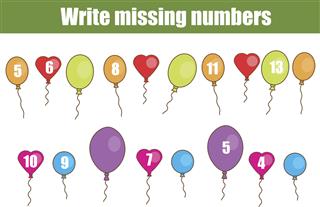
Learning to read is one of the most important skills that a child will acquire. Reading readiness activities can help enhance the experience that will open up an entirely new world of letters and numbers. The following article will illustrate the best ways to help a child in his first foray into the world of books.
Isn’t it amazing how fast children grow? The baby days fly by and soon you’re settling down to find out about reading activities, when it feels like just yesterday that you brought a well wrapped little bundle of joy home. The formative years are all important, and a child’s mind has tremendous potential- it’s more open and receptive than the adult mind, preconceived notions don’t exist, and the ability to learn is astounding.
You can start with reading readiness activities from as early an age as two years, though as a parent or care giver, you will be the best judge to gauge the suitable time to begin. Reading readiness is a term that is used to describe the transition period, which generally extends over several months, during which a subject gradually learns how to read. There are a number of instructional programs for early literacy, with different activities in each. Discussed below are some guidelines and activities for children, based on their age.
Preschool Activities
We don’t believe in specific ages to begin particular activities. All babies are unique, and each will develop at its own pace. Even talking to your baby will help develop language skills as you go along. The following are some activities for preschoolers, which are important for child development.
Reading Out Loud
Read to your child on a daily basis. Your reading material need not be limited to children’s books and bedtime stories. Use magazines, newspapers, web articles, and any other medium that you can lay your hands on.
Incorporate Identification Into Reading
While reading out, try to point out to articles that will help your child identify them. Give your child his own books, and read them together. Point out each word as you read it. This gradually encourages letter recognition, and is an important tool when helping children read.
Play Rhyming Games
Rhyming helps in segregating different sounds that make up a word. Sing songs or read out simple rhyming poems, to encourage your child to recognize the difference in sounds. Keep games simple and fun.
Kindergarten Activities
Kindergarten may well be the place where your child learns how to read. This is where children are exposed to a number of activities to promote reading readiness and comprehension. However, these are some activities that you can practice at home with your child to encourage the learning process.
Left to Right Progression
This is one of the most basic rules to incorporate into a learning program when you’re teaching kids to read. Setting up tasks from left to right is a way to encourage this progression. Simple things, like lining up books, toys, and other articles of a child’s interest from left to right will help to ingrain this progression. Similarly, running your finger along each line as it is being read will help in the same way.
Alphabet Recognition
Learning the alphabet is the foundation of early literacy- singing the ABC can help your child learn the sequence. Point out articles to encourage word association; when starting out, begin with ‘A for Apple’ for instance, then try to build up a number of A words, as you go along. This will help in associating the ‘A’ sound with the ‘A’ words. Continue this through all the letters of alphabets.
Association Everywhere
Make reading a part of as many activities as possible. Reading signs and letters when running errands or on an outing will keep the activity fun, while promoting word and letter association and inculcating the reading habit.
Reading readiness activities can ease the process of early literacy. Learning through examples and association will enable your child to enjoy this process, and a lesson learned enjoyably is one that will stick for long. Reading is one of healthiest hobbies that you can encourage in today’s world of TV shows and video games. We can assure you that these activities will have your child reading in no time!














